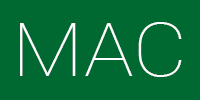Art Spectrum: Digital Emphasis
Art Spectrum: Digital Emphasis, like Art Spectrum, is a beginning, year-long foundation art class that emphasizes digital art and design, but also includes traditional units in drawing, painting, and clay. Its learning objectives are aligned with our established, traditional Art Spectrum class. Art Spectrum: Digital Emphasis will be UC-approved (pending) and can be used to fulfill the “f” requirement, the Visual and Performing Arts requirement for the CSU and UC systems. Art Spectrum: Digital Emphasis is a pathway or prerequisite course for PAUSD’s Graphic Design, Painting/Drawing, and its Ceramics/Sculpture/Glass programs. Additionally, it complements learning in our Photography and Journalism classes. In Art Spectrum: Digital Emphasis, students will develop an understanding of major art and design concepts included in the creative process, including technical, expressive, idea development/creative problem solving, critical thinking, and the Language of Art. The class introduces students to our Art Spectrum art and design units through use of Photoshop, Illustrator and Procreate, some of the more important art software programs, as well as iPads and WACOM Digital Drawing Tablets. Additionally, students will engage in digital drawing and painting exercises, including work in light and shadow, perspective, color theory and color application. Shorter traditional drawing, painting and clay exercises are included to strengthen learning and connections within the various units. These units will include color mixing, perspective, drawing from life, shading and hand building clay techniques. While the class focuses on art making, it will also include discussions, reflection/critiques, occasional short written assignments, and will include information on artists and artistic styles of historical significance. Outside work may include very occasional sketch or research assignments, and all Art Spectrum students are assigned a Museum Visit Report. Students will be able to communicate informed critical reflections about their work and that of others, develop an appreciation of the historical and cultural contributions of art and design, and understand connections between art, design and a variety of associated career options. (Year 9-12 UC-Approved “f”)
Graphic Design
This course may be repeated for credit. Graphic Design picks up where Digital Art Spectrum leaves off, introducing students to technical and aesthetic skills, design thinking and design-related areas associated with the field of graphic arts. The class develops a variety of communication related skills, while building further understanding of the elements and principles of design, using Adobe Photoshop, Illustrator, In-Design, to create a variety of design related assignments. Class projects will include areas such as logo design, branding and editorial design, magazine layout, environmental design, advertising, communication design, product packaging and signage. Assignments include process and style exercises, individual and collaborative group projects; personal identity/expression, design history/movement style pieces, and digital portfolios. Visual composition, layout, color, style and typography are recurring points of focus. Ultimately, students will develop an understanding of contemporary design, professional level software programs, and understand a wide range of design application and relevance. Students will also be able to critically analyze their own work alongside the work of others, through critique, reflection and short written assignments
(Year 10-12 UC-Approved ”f” Prerequisite: Art Spectrum or Digital Art Spectrum)
AP 2-D Art & Design
(Photography as Primary Media) 6448PH AP Stud Art (Photography Focus with 2D Media/Mixed Media) Year 11-12 UC-Approved ”f” Prerequisite: Successful completion of one year of Photography and one year of Advanced Photography (two years of previous work). Portfolio review for Advanced Journalism/ Media and Graphic Design students with advanced study in Photography or Art media. Quality and quantity of work in the portfolio must reflect the AP standards in preparation, technical refinement and creative achievement. 2D Design Portfolio may include artworks from 2D media, including graphic design, printmaking, collage, photography, and digital art. AP portfolios for College Board submission consist of two sections. The first section includes 15 online submissions for the Sustained Investigation with specific narration of use of materials, process and ideas on a student selected topic demonstrating a thematic approach of exploration, experimentation, artistic and aesthetic development. The second section consists of 10 Selected Works that demonstrate synthesis of materials, process and idea for technical skill and artistic range. Artworks for the Sustained Investigation section must be completed, photographed, and digitally uploaded to an AP online portal with narration, and 5 artworks ready for Selected Works submission by May 1. College Board will review portfolios and scores are posted in July.

